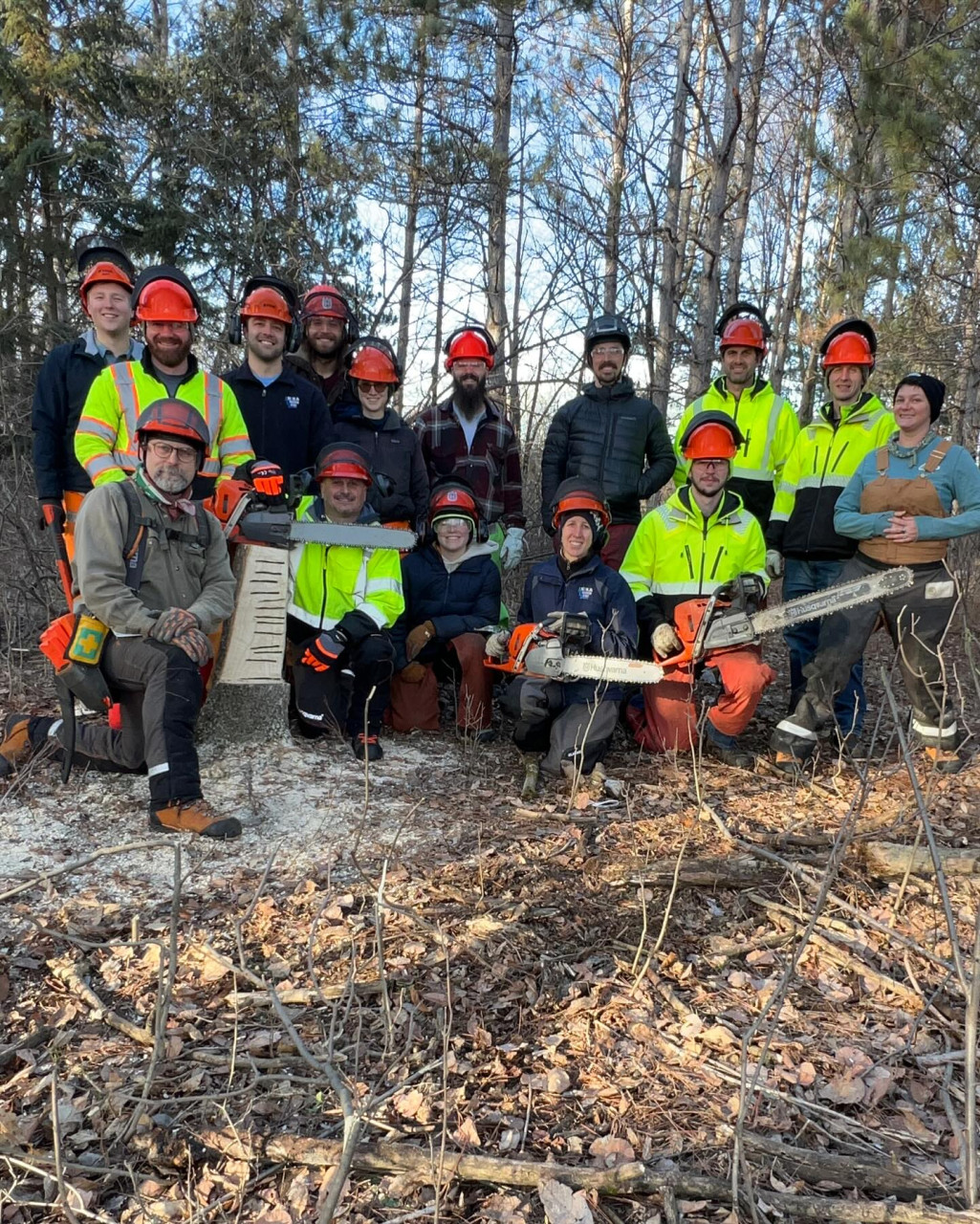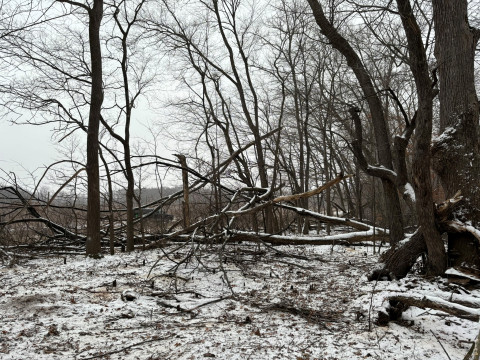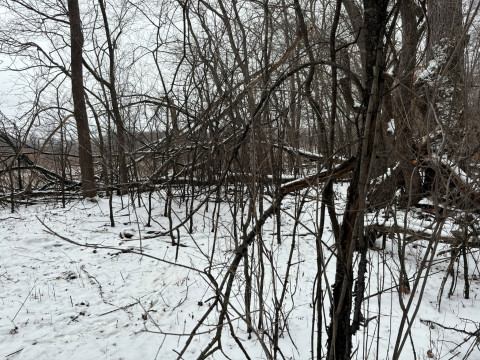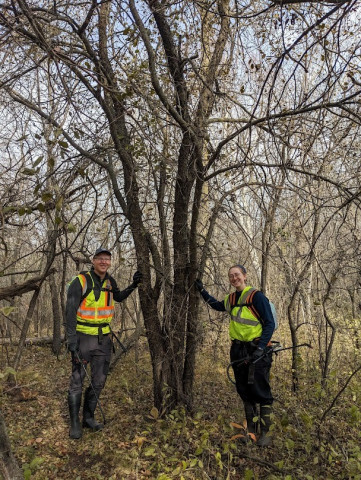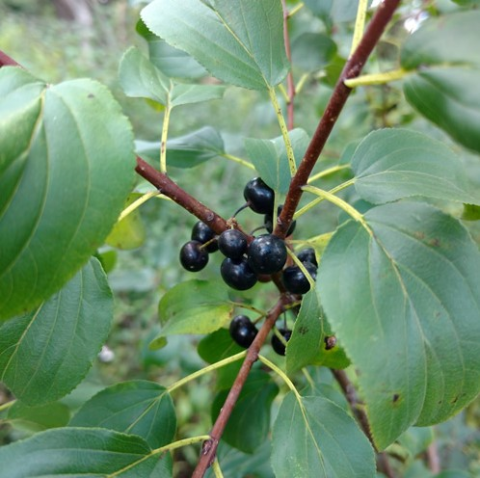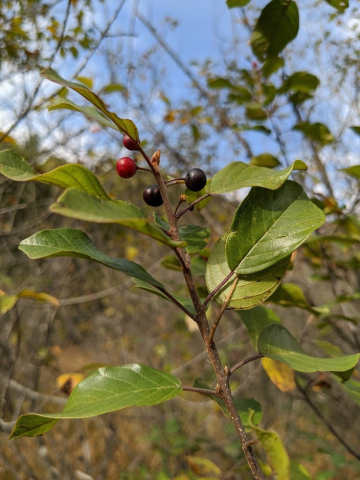This past month, ACD and partner staff completed an 8 hour chainsaw safety training course. The skills and safety tips learned will be applied while clearing large buckthorn, cutting cedar trees for streambank stabilization projects, and while addressing other natural resource concerns that come our way. Winter is an ideal time to cut or trim oak and ash trees without the high risk of spreading oak wilt and emerald ash borer diseases. If you plan to cut trees on your property this season, remember the following tree felling rules:
Hazards- Survey the area to identify and remove any potential hazards.
Hinge- Create a hinge for safe and predictable felling. See an example notch here.
Escape- Have 2 escape routes at 45 degrees from your cutting direction.
Lean- Analyze the tree from all angles to ensure you understand its weight distribution and lean direction.
Plan- Have a plan to complete a safe and predictable cut. Click here to learn how to execute the bore cut.
Having the right training and equipment can spare you from serious harm when using a chainsaw. Take the time to educate yourself on proper safety equipment and risk management strategies. Safe cutting! You can read a description of the training course here or contact Logan Olson, Restoration Technician, at
